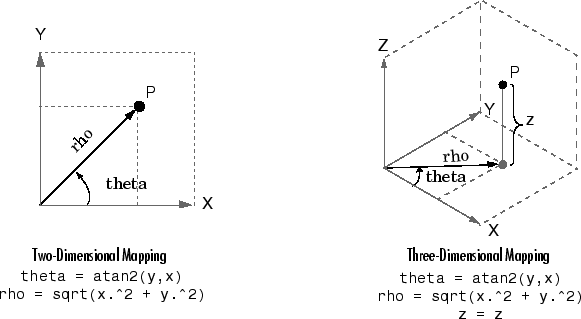cart2pol
Transform Cartesian coordinates to polar or cylindrical
Description
Examples
Input Arguments
Output Arguments
Algorithms
The mapping from two-dimensional Cartesian coordinates to polar coordinates, and from three-dimensional Cartesian coordinates to cylindrical coordinates is

Extended Capabilities
Introduced before R2006a